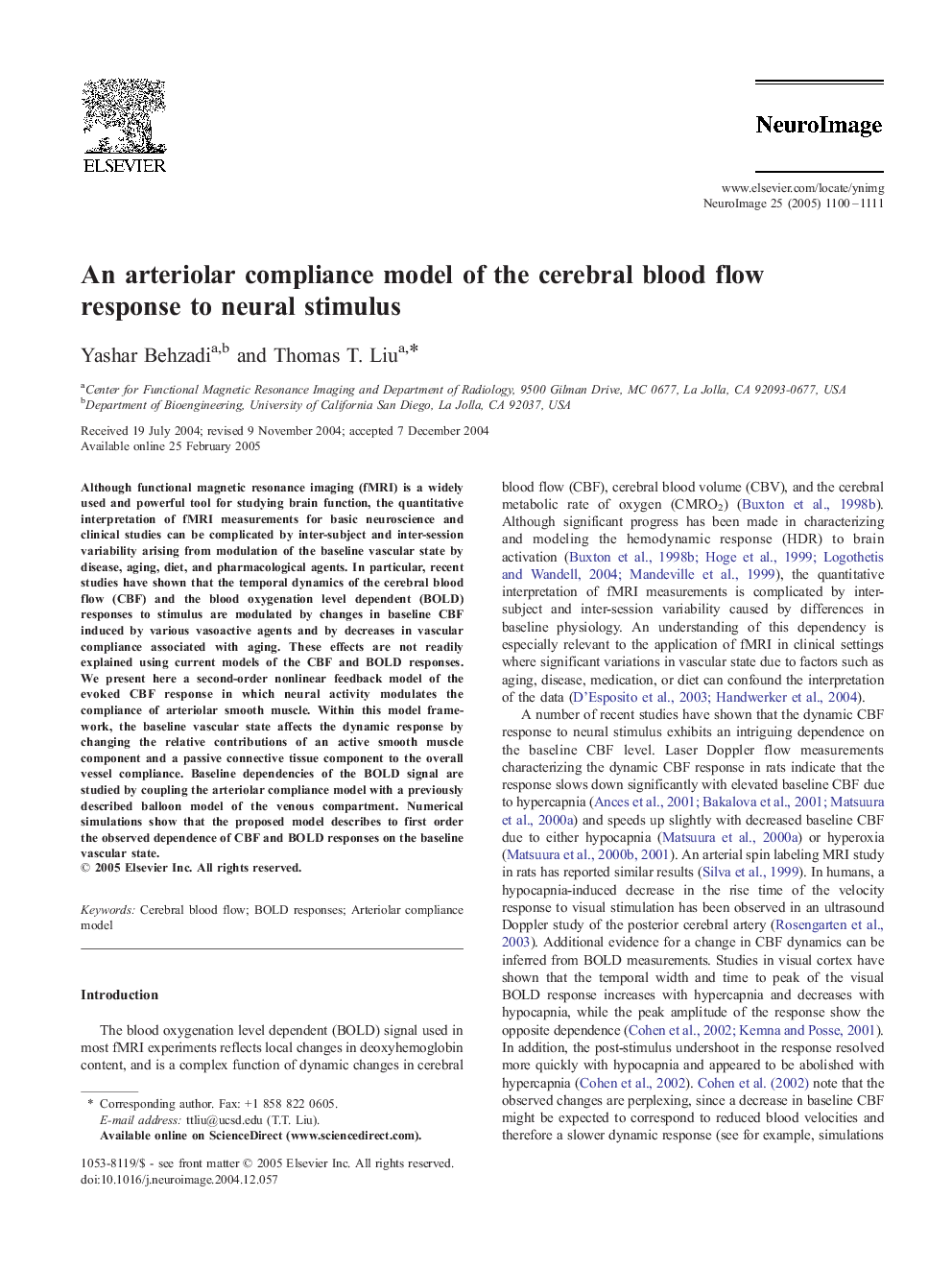| Article ID | Journal | Published Year | Pages | File Type |
|---|---|---|---|---|
| 9198039 | NeuroImage | 2005 | 12 Pages |
Abstract
Although functional magnetic resonance imaging (fMRI) is a widely used and powerful tool for studying brain function, the quantitative interpretation of fMRI measurements for basic neuroscience and clinical studies can be complicated by inter-subject and inter-session variability arising from modulation of the baseline vascular state by disease, aging, diet, and pharmacological agents. In particular, recent studies have shown that the temporal dynamics of the cerebral blood flow (CBF) and the blood oxygenation level dependent (BOLD) responses to stimulus are modulated by changes in baseline CBF induced by various vasoactive agents and by decreases in vascular compliance associated with aging. These effects are not readily explained using current models of the CBF and BOLD responses. We present here a second-order nonlinear feedback model of the evoked CBF response in which neural activity modulates the compliance of arteriolar smooth muscle. Within this model framework, the baseline vascular state affects the dynamic response by changing the relative contributions of an active smooth muscle component and a passive connective tissue component to the overall vessel compliance. Baseline dependencies of the BOLD signal are studied by coupling the arteriolar compliance model with a previously described balloon model of the venous compartment. Numerical simulations show that the proposed model describes to first order the observed dependence of CBF and BOLD responses on the baseline vascular state.
Keywords
Related Topics
Life Sciences
Neuroscience
Cognitive Neuroscience
Authors
Yashar Behzadi, Thomas T. Liu,
